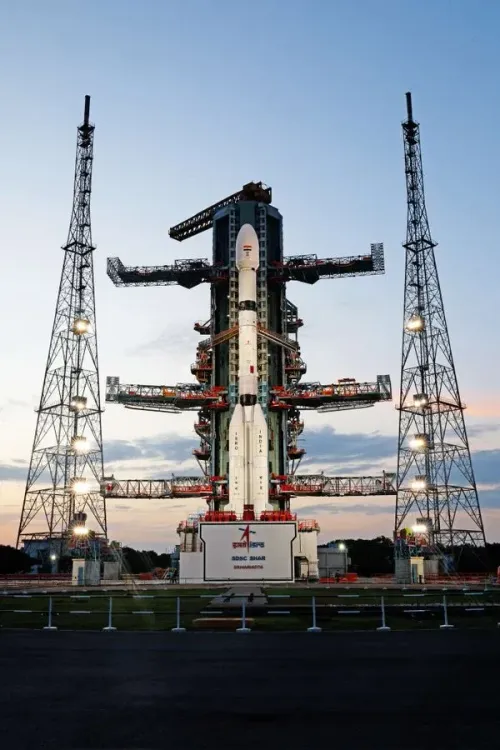Will the ISRO-NASA Joint Satellite 'NISAR' Launch Successfully Today from Sriharikota?

Synopsis
Key Takeaways
- NISAR represents a historic collaboration between ISRO and NASA.
- It will utilize dual-frequency Synthetic Aperture Radar technology.
- The satellite weighs 2,392 kilograms.
- It will scan the Earth every 12 days.
- NISAR aims to provide 24x7 imaging capabilities.
New Delhi, July 30 (NationPress) The Indian Space Research Organisation (ISRO) and NASA are poised to launch their groundbreaking collaborative Earth observation satellite, NISAR, today at 5:40 p.m. IST from the Satish Dhawan Space Centre located in Sriharikota.
This mission, which carries a significant budget of $1.5 billion, aims to transform our monitoring capabilities of the Earth's surface, focusing on the detection of natural disasters and shifts in the environment.
NISAR (NASA-ISRO Synthetic Aperture Radar) represents a pivotal endeavor, as it will be the first instance of Earth being observed using dual-frequency Synthetic Aperture Radar, specifically NASA’s L-band and ISRO’s S-band. These radar systems will utilize NASA’s 12-meter unfurlable mesh reflector antenna, integrated onto ISRO’s tailored I-3K satellite bus.
With a weight of 2,392 kilograms, this satellite will be launched aboard India’s GSLV-F16 rocket.
After launch, the satellite will enter a sun-synchronous orbit at an altitude of 740 km, enabling it to scan the Earth’s land and ice-covered regions every 12 days with high-resolution images over a 242-kilometer wide area, employing SweepSAR technology for the first time.
ISRO Chairman, V. Narayanan, stated, “The Earth observation satellite, developed collaboratively by ISRO and NASA, will be launched on July 30 via the GSLV-F16 rocket manufactured in India.”
He underscored the satellite's capability to provide continuous imagery, unaffected by weather or lighting conditions.
During a briefing at the Chennai airport on the evening of July 27, Narayanan noted, “It can capture images of the Earth around the clock, regardless of weather conditions, enabling it to identify landslides, assist in disaster management, and monitor climate change.”
Earlier on Sunday, the Department of Space issued a press release stating, "The NISAR mission merges the technological prowess of both agencies. NASA has supplied the L-Band Synthetic Aperture Radar (SAR), a high-rate telecommunication subsystem, GPS receivers, and a deployable 12-meter unfurlable antenna. Meanwhile, ISRO has contributed the S-Band SAR payload, the spacecraft bus accommodating both payloads, the GSLV-F16 launch vehicle, and all necessary launch services."





